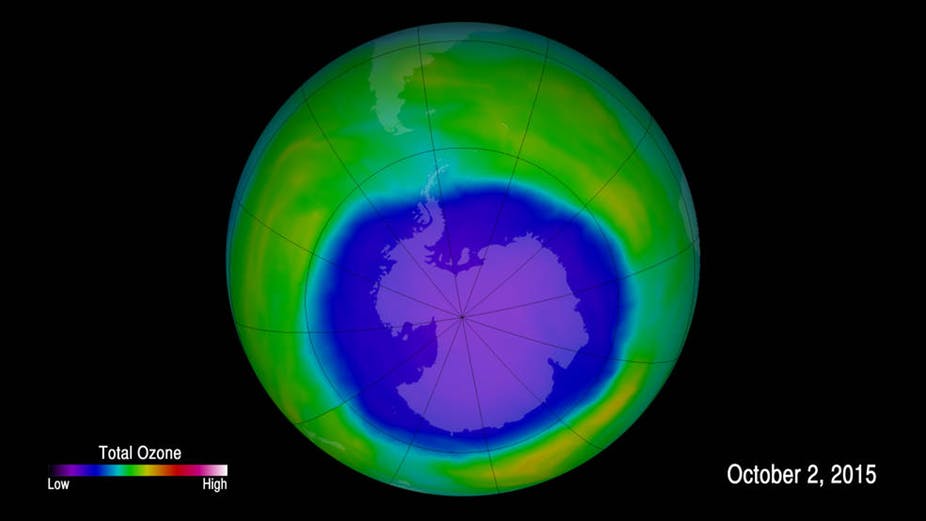
How the Ozone hole affects the weather
I have mentioned in previous posts that, despite the possible rise in sea levels from global warming (which is already happening but only to a small extent), the pressing issue with Antarctica is that it has a big role in the world’s weather.
There are many ways that it affects our weather but today I will talk about the Ozone layer’s impact. The ‘hole’ (thinning) in the ozone layer, besides allowing higher levels of UV radiation to reach Earth, has recently been found to have an impact on rainfall in the tropics.
Researchers at Switzerland’s University of Bern found that rainfall in tropical areas of the Pacific Ocean is influenced by the hole in the ozone. Be aware that the distance between them is 10,000 kilometers.
There’s a thing called the South Pacific Convergence Zone (SPCZ) and it is the most important rain belt in the Southern Hemisphere. The researchers found that the ozone hole alters the shape and position of the SPCZ.
The bad news is that this new circulation pattern has increased rainfall on the northern side of the zone, and decreased rainfall on its southern edge.
One of the results, for instance, has been that Rikitea, in French Polynesia, has had its average annual rainfall between October and December increased by 50 percent over a thirty year period. These changes could have an impact on agriculture.
The good news is that because we banned Chlorofluorocarbons (CFC’s) and other Ozone depleting chemicals some decades back, the hole in the ozone is healing and should recover over the next few decades.
As that happens, rainfall is predicted to return to its original pattern. Unfortunately, climate change will still have an impact but at least the recovery of the ozone layer is good news.
Well, yes and no. The thinner ozone layer is also helping to keep Antarctica cold. A thinner Ozone hole leads to faster growing winds over the Southern Ocean. This intensification of winds initially triggers a rapid cooling of the sea surface and expansion of sea ice.
Greenhouse gases (whether you believe they are a result of human action or not) are like having your foot on the accelerator of warming, whereas the Ozone hole is like having your foot on the brake. Take your foot off the brake and the warming increases. So people come up with geo-engineering ideas to change our climate without knowing the full ramifications of their ideas.
All we can say at the moment is that climate is complicated and we still don’t know enough about Antarctica.

